Gnats will absolutely drive you crazy! They’re tiny insects that swarm around slices of watermelon at the family picnic, hover around your kitchen drain and trash cans, and when you go over to water your houseplants, there they are again.
And for some reason, those little boogers seem to love to aim right at your eyes. Fortunately, they don’t bite or sting, but they’re still just a huge annoyance. If you’re asking, “Why do I have so many gnats in my house,” just know that gnats can easily get into anyone’s house, no matter how clean they keep it.
But if you know what they like to eat and where they hang out, you can see areas where you can give extra attention to cleaning and prevention and where to place traps to kill as many as possible.
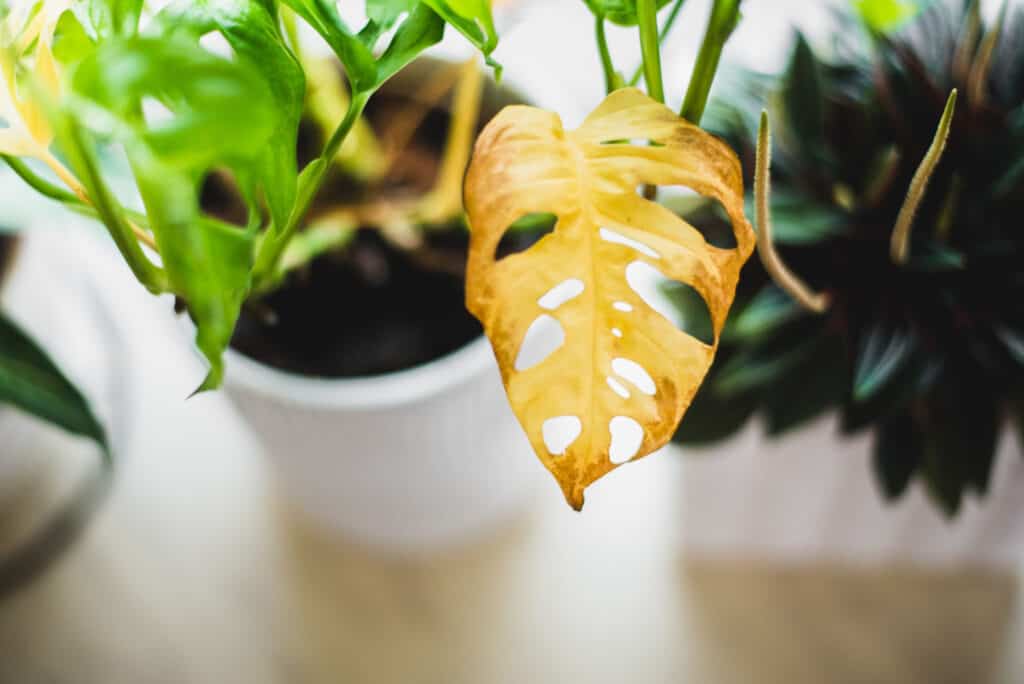
Gnats are attracted to overwatered houseplants. The yellow leaves on this monstera are a sign of overwatering.
©Jus_Ol/Shutterstock.com
What Are Gnats?
Gnats are a type of delicate little fly that are about 1-13 mm long – in some cases so small they are almost invisible. You might just notice them because they are flying around in a big swarm of their friends and relatives. They aren’t strong enough to fly very well, so they’re actually pretty easy to catch in the air with your bare hand, which you can feel free to do if you want to because they don’t bite or sting.
They tend to fly around erratically for short distances, then land on something to rest. They can come in different colors, if you get close enough to see them, including brown, yellow, grey, and black.
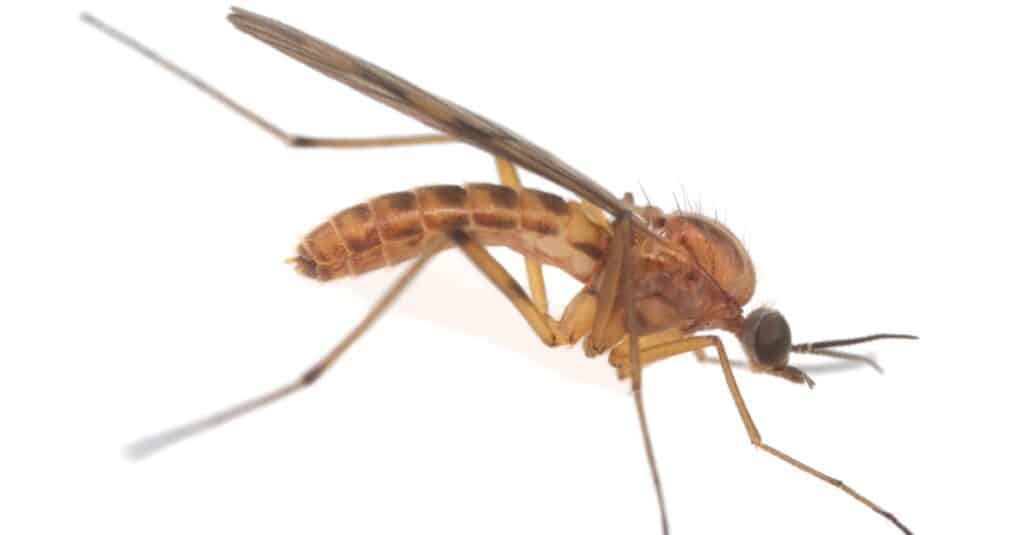
A close-up of a wood gnat shows you how light and delicate they are.
©Henrik Larsson/Shutterstock.com
What Do Gnats Eat?
What gnats eat is a really important question, because if they can’t find food in your house, they won’t stay there. Gnats especially like over-ripe fruit of any kind: apples, pears, strawberries, bananas. lemons, cherries, peaches, watermelon.
They also like decaying vegetables, particularly those with soft peels like potatoes, corn, or carrots. They’ll go for leafy greens, and for the thicker-skinned vegetables like pumpkins and squash when they have been cut open or have not been harvested and have burst open in the decaying process in the garden.
They hang around decaying mushrooms or other fungi. Gnats love fermented drinks: wine, beer, etc. And they also like stinking, moldy, overwatered areas like gutters, drains, or overwatered houseplants. Finally, if you have a pet, gnats will seek out their feces. All of these places attract them not only for food but as a place to lay their eggs, which hatch into larvae and feed on that food source.
The whole life cycle of a gnat is only 4-5 weeks, so they basically live just long enough to eat and reproduce.
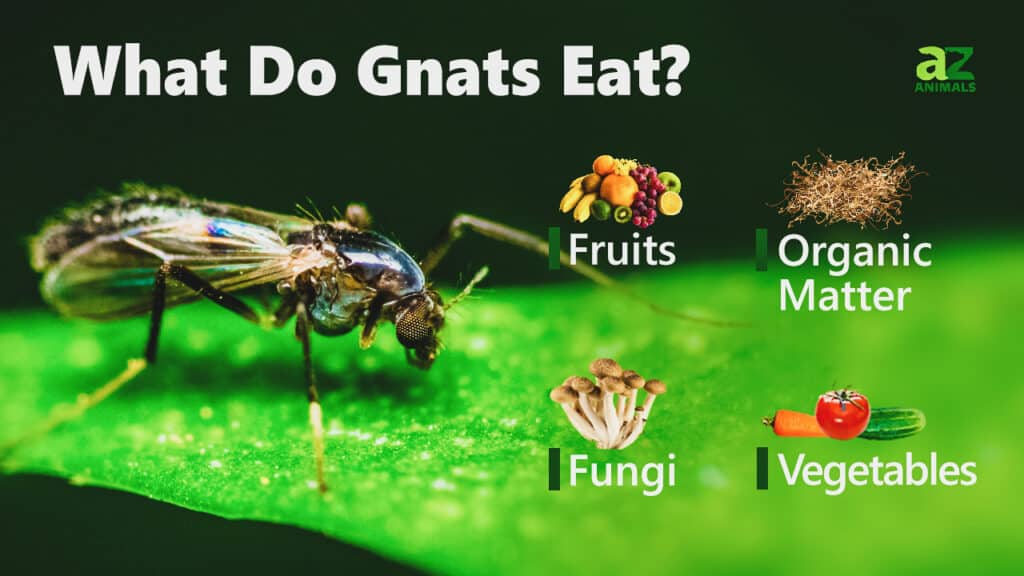
Why Do I Have Gnats in My House?
It doesn’t mean you are a bad housekeeper if you have some gnats in your house. Anytime you bring fresh produce, fresh flowers, or potted plants into your house from the store, you could be transporting some adult gnats or gnat eggs or larvae hidden in the soil or under leaves or skins.
They may hatch once they’re in the house and seek out other food sources and habitats, like sink drains, and garbage cans. This can happen at any season of the year, even the dead of winter in Alaska, because the gnats or their eggs have been kept from freezing during the process of transporting the plants or produce to the grocery store and to your warm house.
Of course, this becomes an even worse problem if you don’t clean your drains very often or if you have standing water in your houseplants, leave out bowls of fruit or dirty dishes, or don’t empty the trash very often.

You can get gnats in your house any time of year, as they stow away in fresh produce and flowers you bring home from the grocery store.
©Jason Person/Shutterstock.com
The Best Ways to Get Rid of Gnats
The number 1 tip for getting rid of gnats is to notice where you see them and take away the thing that is attracting them:
If You See Gnats Near
- Potted plants: do not overwater the plants or allow water to stand in their drainage dishes.
- Kitchen countertops: clean up crumbs and spills, wash dirty dishes, or put them in the dishwasher rather than letting them sit out.
- Drains: pour boiling water down the drain whenever you see gnats there.
- Fruit bowls: keep the fruit covered or in the refrigerator.
- Trash cans: empty trash cans regularly. securely close trash bags so they cannot get inside and multiply in your outdoor garbage cans.
- Pet litter boxes, reptile aquariums, or fecal matter in the yard: replace litter and pet bedding more frequently. Use a pooper-scooper to remove your pet’s presents in the yard and dispose of them in a tied plastic bag.
- House gutters: clean out the gutters, dispose of rotting leaves and waste in the garbage, and hose out the gutters with a water hose.
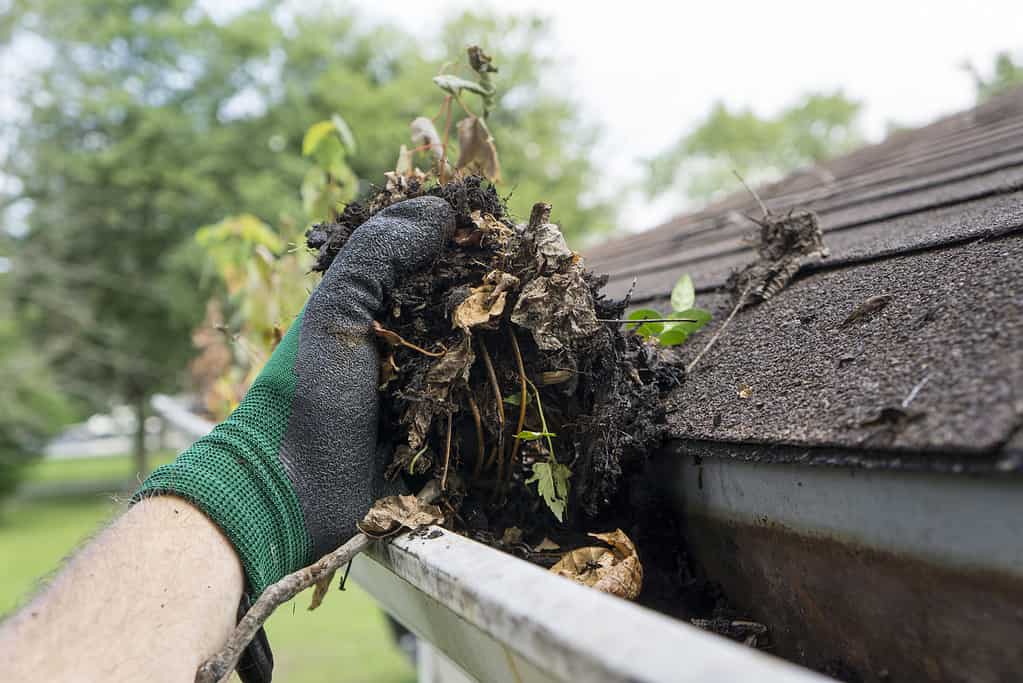
Cleaning up moist, decaying plant matter inside and outside your house can deprive gnats of their favorite environment.
©iStock.com/IndyEdge
Pretty Prevention
Try planting any of these flowers in your garden to repel gnats:
- Geraniums
- Lemon thyme
- lavender
- Mexican marigold
Also, gnats don’t like windy conditions, so you can open windows on a windy day or run fans in your house to keep the air stirring up.
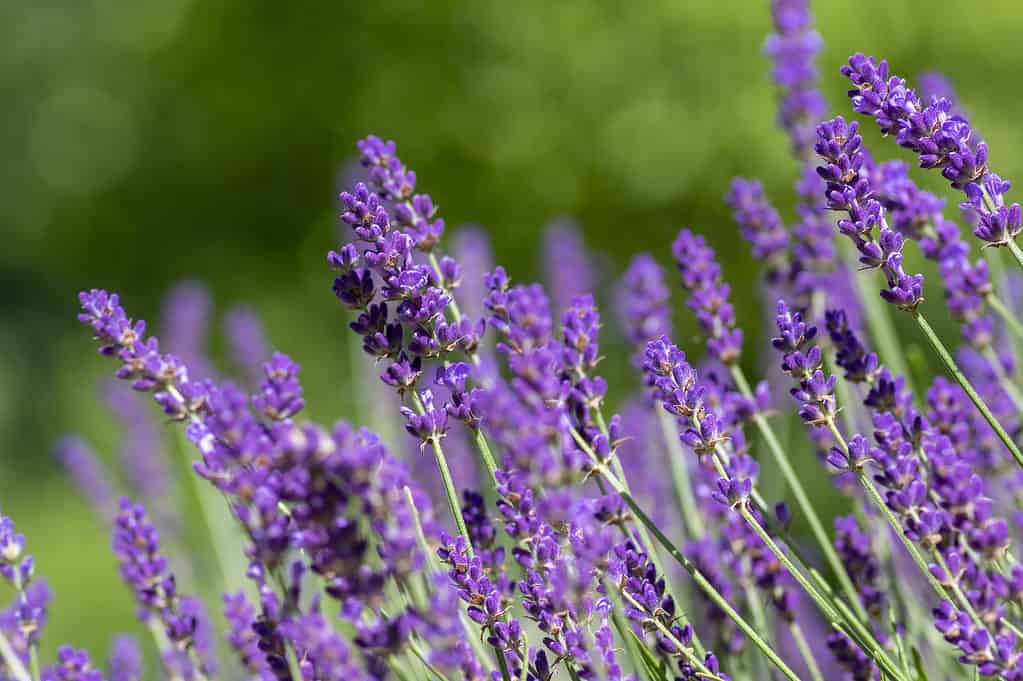
Lavender will be a beautiful and fragrant addition to your flower garden, and it will repel gnats.
©iStock.com/Iva Vagnerova
Traps and Kill Solutions
- You can use an aerosol spray with pyrethrin, which is safe to use around humans and pets.
- Purchase gnat traps made of sticky paper. Gnats get stuck to it, and you throw it away when you’ve got them all.
- Use an electric bug zapper. It will be super-efficient at killing a large number of gnats and other unwanted insects.
- Put a decaying piece of fruit in a bowl covered with plastic wrap. Punch little holes in the plastic wrap. Gnats will get in but have a hard time finding their way out again. You could also try this with a little wine or beer in the bottom of a glass.
- Mix a little apple cider vinegar with warm water and a few drops of dishwashing liquid. Gnats will be drawn to the intoxicating smell, but once that dish soap gets on their wings, their flying days will be over.
Do Gnats Like The Smell of Bleach?
To address gnats hovering around your sink and pipes, bleach can be a helpful solution. Create a mixture by combining half a cup of bleach with a gallon of water, and then carefully pour it down the drain. Be sure to follow up with a flush of hot water. If gnats reappear, you can repeat the process as needed.
Alternatively, you can change the scent in your environment to something that repels gnats. Consider lighting citronella candles or using sprays with lemon, vanilla, or lavender fragrances.
While gnats are attracted to sweet-smelling fruits, they tend to be averse to scents like vanilla, lemon, and lavender. A quick spritz or the use of these scents can help keep them away.
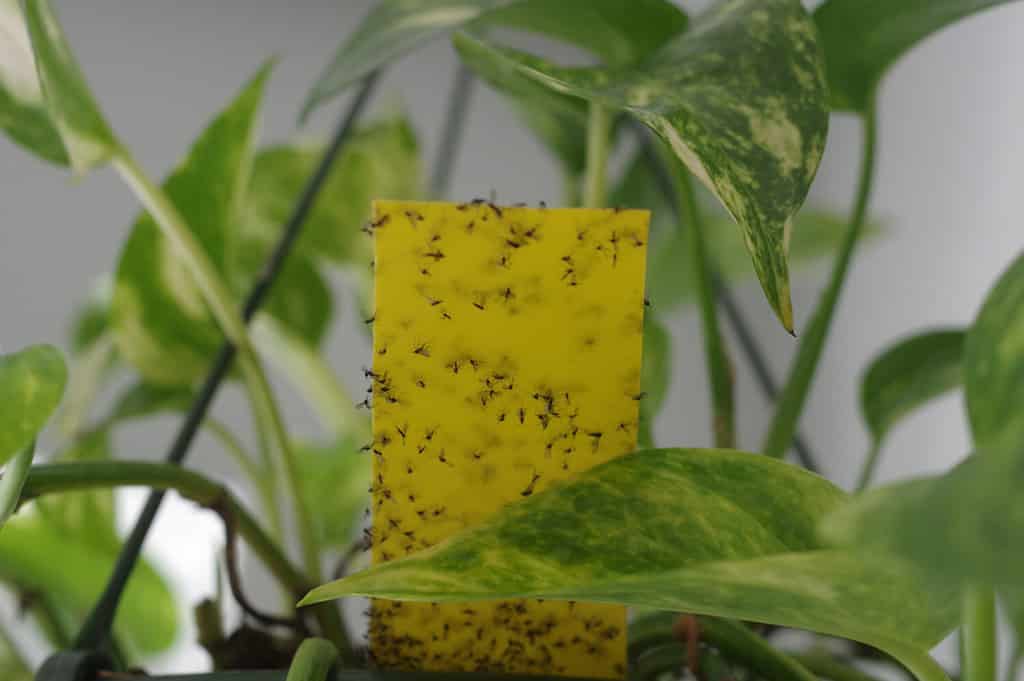
A sticky trap for gnats is a cheap and simple solution to an irritating problem.
©Pixelbender36/Shutterstock.com
Battling with a bunch of gnats is not exactly how you’d like to spend your weekend. But on the other hand, it’s a problem you can definitely get control of with some pretty simple and low-cost things that don’t just make your house less of a home for gnats, but a better home for you.
Getting rid of stinky stuff, throwing out food that’s spoiling, getting up poop from the yard, opening windows to let a breeze blow through, and planting fragrant flowers in your garden: all of those things are a big improvement, right? So just think of it as making a better home for yourself, even as you make it a worse one for these pests.
The photo featured at the top of this post is © Tomasz Klejdysz/Shutterstock.com
Thank you for reading! Have some feedback for us? Contact the AZ Animals editorial team.






